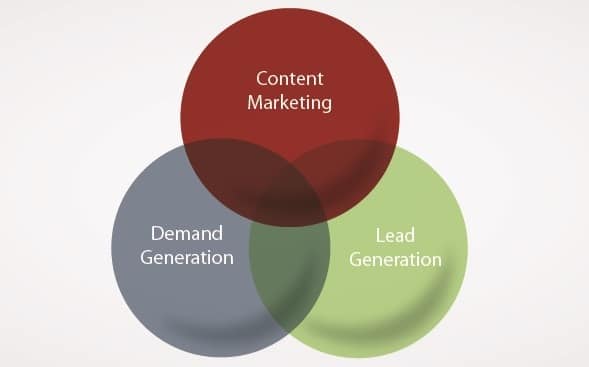
You know we like to talk a lot about marketing, specifically content marketing, because it’s the thing we do really well. We know content can’t exist in a vacuum. It needs to be part of a comprehensive strategy geared toward establishing your organization as a thought leader and driving results. We’ve got lots of blog posts on this topic, so I’m not here to offer you another overview of how to do content marketing the right way.
What I want to dive into is what happens after you create the strategy and implement that rigorous content marketing program. You should expect the leads to start flowing, all of them to turn into sales, and everyone to be happy, right?
Yes and no.
Every organization involved in selling wants leads, but not just any lead will do. Aside from diligently qualifying those leads via phone, email, or in person — all time consuming and sometimes not very effective methods — are there ways to determine how much more likely a prospect is to buy without using all your sales team’s bandwidth? Yes, and depending upon a number of factors, lead scoring can be a game changer for your organization. Here’s how to know if your company is ready for it and how to get started.
What is it and do I need it?
Simply put, lead scoring is an important yet somewhat confusing methodology used to determine how ready your prospect is to buy and how important that prospect is to your organization. It creates a ranking by using key behavioral indicators and a prospect’s engagement with your organization’s content, website, and marketing — then assigns a score for any given action.
Why is it confusing? Not every organization needs or can use a lead scoring model. Is your company ready? Answer these questions to find out:
Does your sales team have too many leads? Lead scoring is best used to identify, prioritize, and manage where to focus your teams’ energies when you have too many leads and can’t reach out to them all.
Is lead quality a common complaint from your sales team? Your organization can generate hundreds of leads but may have no idea which ones are actually sales-ready. Ultimately this wastes precious time on the wrong prospects. Lead scoring can help to qualify or better yet — disqualify — prospects based on their interactions and other identifying criteria. It also helps the sales team understand when to engage a prospect, keeping them from reaching out too soon.
Does your organization have the technical capabilities required to score leads? Try as you might, lead scoring cannot be managed in a spreadsheet. A marketing automation platform and CRM are critical to managing not just the lead scoring methodology but the entire life cycle of your prospect as they enter and progress through the sales funnel.
Is your target buyer clearly defined? This may seem like a no-brainer but taking the time to examine and evaluate who is a buyer, decision-maker, or influencer is a worthwhile exercise and will help to crystallize and hone the focus of many marketing activities, especially scoring for sales-readiness.
Getting started
So now you’ve determined, maybe with professional assistance, that lead scoring is right for your organization — where is the template to get started? The truth is there isn’t one right or universal way to establish a model. Some marketing automation tools have built-in scoring, but even those may require customization based on the unique qualities of your prospects, sales cycle, and even your products. At a high level, the most common criteria for what to score includes:
Engagement: While not a perfect measure of sales-readiness, engagement can be used in connection with other factors to determine how to move a prospect up the sales ladder. Engagement activities include:
• Response to email marketing and actions taken
• Website activity
Behavior: Investigating and evaluating specific interactions taken by a prospect can be a leading indicator of their interest and appetite for further digital conversations. Consuming higher level content such as an eBook or white paper is a strong signal a prospect is serious about your offering and willing to spend more time with your content.
Persona: While technically a criteria used in lead scoring, we would argue this category actually falls into the realm of lead grading, where we move beyond evaluating actions taken and look more closely at a prospect’s demographic information. (Pardot’s Scoring and Grading Lab offers more detail on the differences between lead scoring and lead grading.) In some cases, this category may offer the most valuable set of factors for evaluating a prospect. The information a prospect offers you about themselves is critical for qualifying or disqualifying them before investing the time and expense involved in marketing. Persona-based characteristics include:
• Job title and job function
• Geographic data
• Firmographic information
Still following along? We know lead scoring can seem like a complicated and involved process requiring time and testing to glean the best insights. There are plenty of examples of lead scoring systems out there that will help you get yours off the ground, including Marketo’s Big List of Lead Scoring Rules.
The more effort that you put into honing the right targets, and the more that marketing and sales work together, the more intelligent your lead scoring program will be. And ultimately, that means more sales.
Want more about how to make marketing automation — and lead scoring — work in your organization? Download “Make the Marketing Automation Decision: A 5-Question Guide.”


